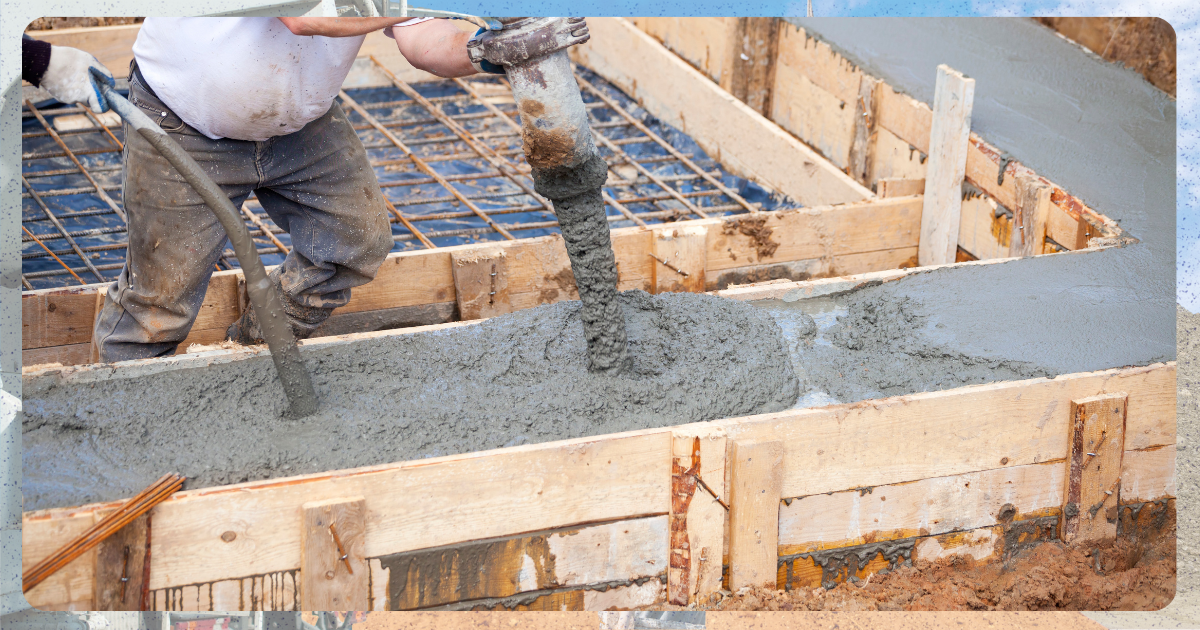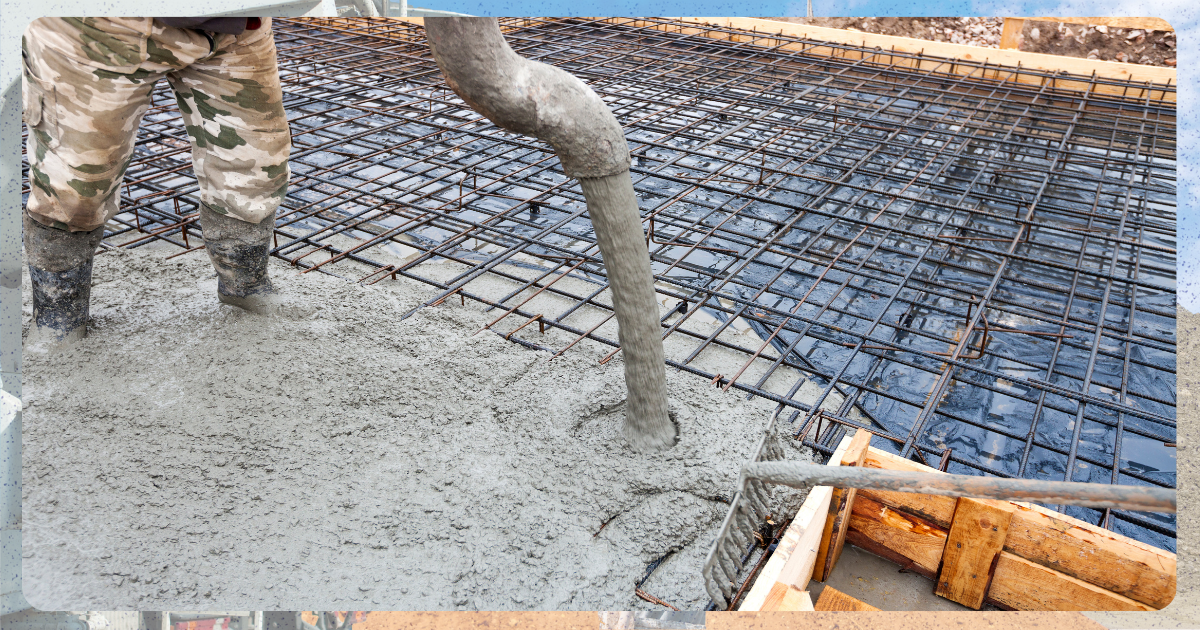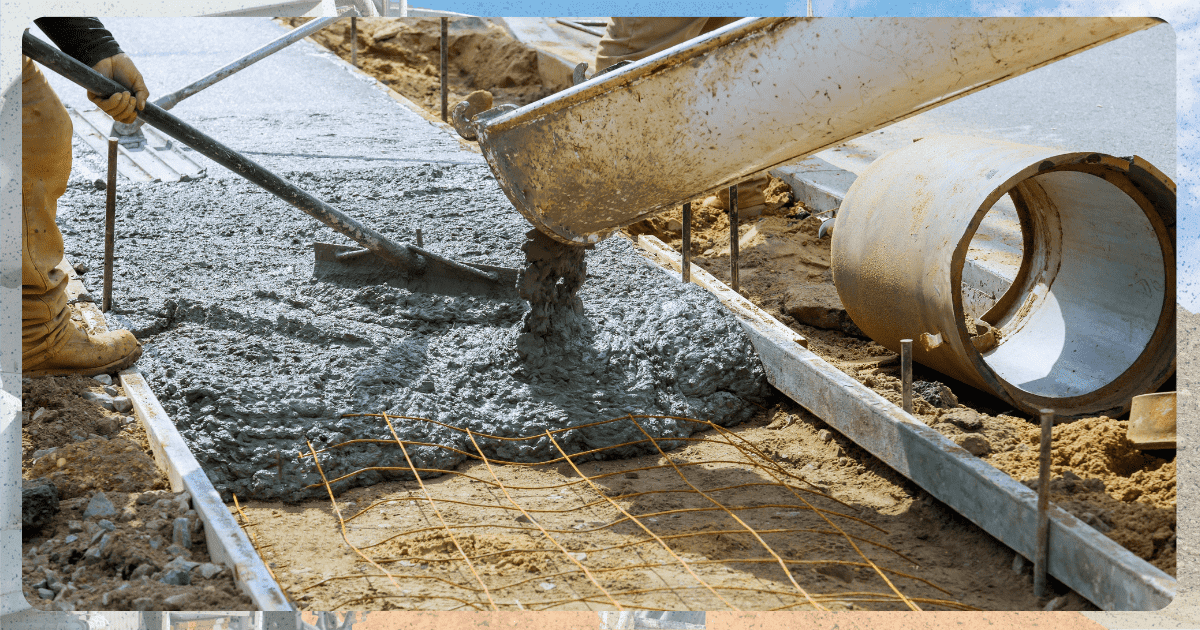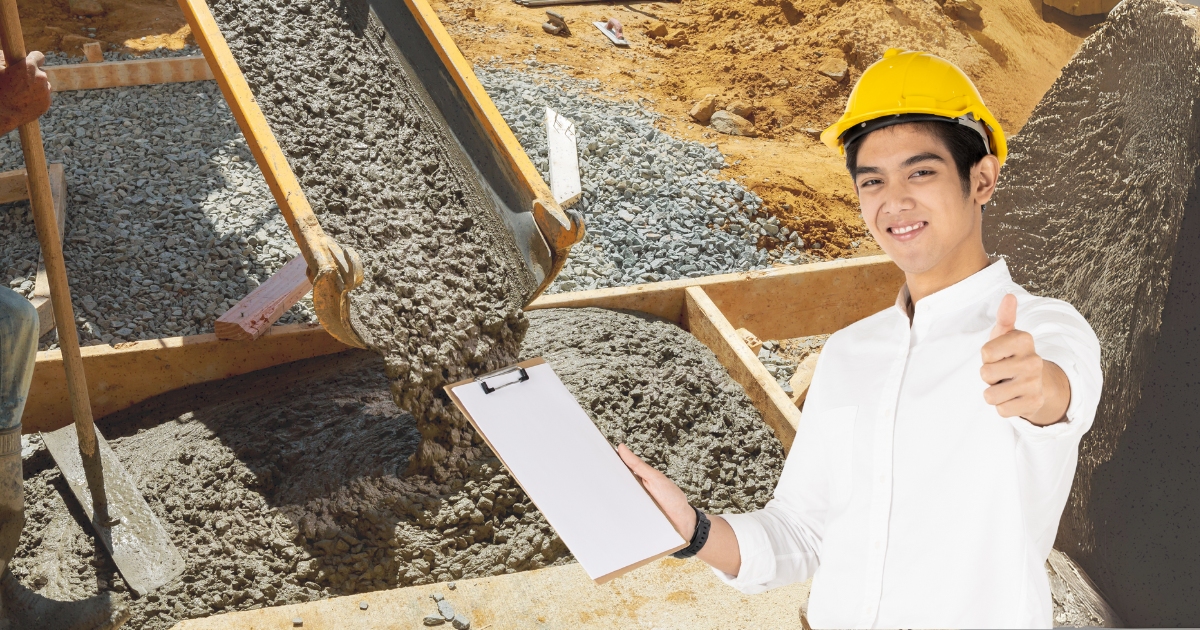Every solid build starts with the right concrete mix. From house walls to garden paths, getting the right blend of cement, sand, gravel, and water is key to making sure your project stays strong for years.
Each ingredient in a cement compound plays a distinct role in the mix, and the ratio used depends on the type of building being constructed. Whether you’re patching up a driveway or working on a bigger construction plan, understanding how to mix cement with the right type and amount of aggregate helps you avoid waste and make the most out of your materials.
In this article, we’ll walk through the basics of cement mixing, explore different ratio combinations, and help you figure out which mix fits your specific project best.

What Makes Up a Concrete Mix?
Inside a concrete mix is a careful blend of several key ingredients that work together to create a strong and durable surface for every project. The most basic concrete compound is composed of cement, sand, gravel, and water, which are then measured depending on the type of structure it will be used on. Understanding just how each component works is beneficial in getting the mix just right for its intended purpose.
Below are the basic components of a concrete mix:
- Cement is the binder that holds everything together.
- Sand fills the spaces between the other particles and improves workability.
- Gravel or crushed stone adds strength and volume.
- Water activates the cement and makes the mixture workable.
Sometimes, admixtures can also be added to the concrete compound. Admixtures modify the properties of the concrete mix, which is ideal for structures that demand special conditions, such as concrete that has resistance to freezing and thawing or an ability to resist water penetration.
All these elements are vital to create the perfect cement mix. Each element works together to form a solid surface that will endure years of use and stand the test of time.
Common Cement Mix Ratios and Their Uses
Different construction tasks need different strengths of concrete. Using the right cement mix ratio helps make sure your structure is safe, stable, and long-lasting. Here are the most common mixes and when to use them.
Note that the ratio refers to (Cement:Sand:Gravel)
1.) 1:2:3 Ratio

This strong mix is perfect for heavy-duty structural elements like beams, columns, footings, and slabs. It’s built for load-bearing and long-term performance.
2.) 1:3:6 Ratio

Great for medium-strength applications, the 1:3:6 ratio is usually used in house foundations, driveways, or low-rise walls. This mix offers a balance between strength and workability.
3.) 1:4:8 Ratio

The ratio 1:4:8 is ideal for non-structural uses like pathways, floor screeds, or levelling concrete. It provides enough strength for light traffic and general surface finishing.
In practice, these ratios are measured by volume. That means for a 1:2:3 mix, you’d use one part cement, two parts sand, and three parts gravel. This ratio is the same whether you’re using buckets, wheelbarrows, or shovels.
It’s also helpful to adjust slightly based on local conditions or specific project needs. Some mixes might benefit from additives or reinforcements for added durability.
Choosing the Right Aggregates
Aggregates like sand and gravel serve different roles in a concrete mix. Choosing the right type and quality of aggregate helps ensure that your concrete stays strong, smooth, and long-lasting.
Clean, well-graded sand is essential. Fine sand creates a better surface finish, while coarser sand contributes to overall strength. It’s best to avoid sand with too much clay or organic material, as these can weaken the mix.
Gravel or crushed stone also comes in a variety of sizes and textures. Larger stones are typically used for structural mixes that need to carry heavy loads. Smaller aggregates work well for smoother finishes or decorative applications.
Tips to Avoid Weak Spots and Defects in Concrete
Apart from having the right ingredients, it’s also important for concrete to be applied with the right method. A few smart habits during mixing and curing can make a big difference. Consider these practical tips to help you avoid common issues that weaken your concrete.
- Use accurate measurements every time to get consistent results.
- Add just enough water to make the mix workable. Too much water can reduce strength.
- Mix thoroughly to combine all ingredients well and avoid clumps or dry pockets.
- Pour the mix soon after preparation because letting it sit too long can affect curing.
- Cure the concrete slowly and evenly. Keeping it moist for several days to avoid early drying, which leads to cracks.
Small details during the process can affect the strength and durability of your mix. With careful preparation and proper curing, you’re building with confidence from the ground up.
The Right Mix Makes All the Difference

The strength and safety of your project depend on how well you understand and apply the basics of mixing concrete. Choosing the right ratio, picking quality aggregates, and following best practices lead to fewer mistakes and longer-lasting results. Whether you’re a DIY builder working on a weekend project or a contractor managing a full site, getting the mix right sets the foundation for everything else.
References
JK Cement. (2023, June 23). What is Concrete Mix Ratio? Types, Grades, Methods & Uses Explained. JK Cement. Retrieved August 4, 2025, from https://www.jkcement.com/blog/basics-of-cement/what-is-concrete-mix-ratio/
Kairali TMT. (2023, July 2). Concrete Mixing Ratio: Definition, Types, and Variations. Kairali TMT. Retrieved August 4, 2025, from https://kairalitmt.com/perfect-concrete-mixing-ratio-for-slabs-and-floors/
UltraTech Cement. (n.d.). Guide on Admixtures in Concrete: 10 Types and their Uses. UltraTech Cement. Retrieved August 4, 2025, from https://www.ultratechcement.com/for-homebuilders/home-building-explained-single/descriptive-articles/a-guide-on-admixtures-in-concrete










